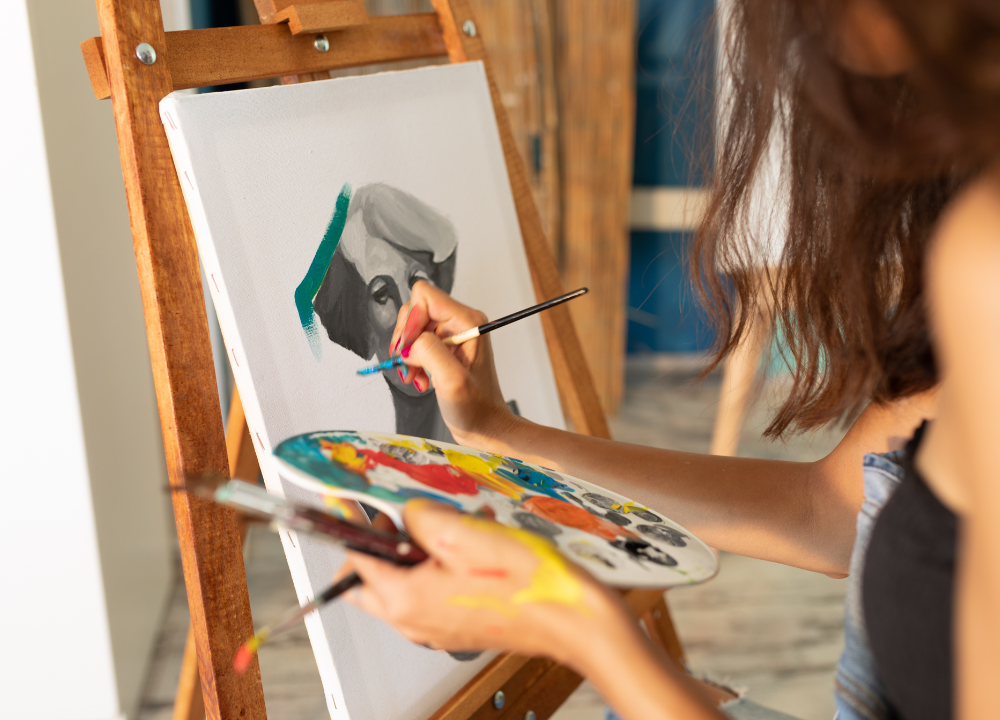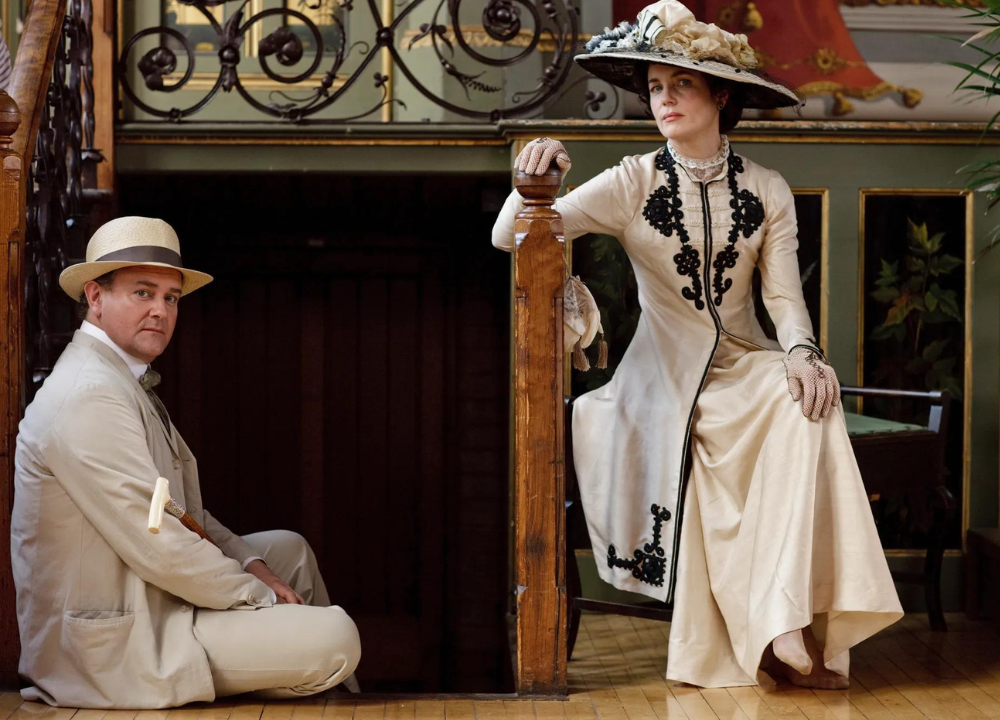Art and the artist have a complex relationship. Many people debate whether we should separate the creator from their work.
This question sparks passion and disagreement among fans and critics alike. Some believe an artist’s personal life and actions can taint their creations. Others argue that art should be judged on its own merits, regardless of the creator. This discussion touches on deep issues like morality, talent, and the impact of art on society.
As we explore this topic, we will look at various perspectives. Understanding these views can help us form our own opinions. Should we appreciate art without considering the artist? Let’s delve into this intriguing debate.
The Dilemma Of Art And Artist
The debate of Art vs. Artist raises complex questions. Should we judge art by its creator? This dilemma often sparks heated discussions. Some believe we should separate the creator from their creation. Others argue that the artist’s actions and beliefs affect how we see their work. This blog post explores the cultural and historical context of this issue.
Cultural Perspectives
Cultural views on art and the artist vary greatly. Different societies have different beliefs about the relationship between the creator and their creation. Here are a few key points:
- Individualism vs. Collectivism: In individualistic cultures, the artist’s personal life may overshadow their work. In collectivist cultures, the focus often shifts to the artwork itself.
- Art as Reflection: Many cultures see art as a mirror of the artist’s beliefs. This perspective suggests we cannot ignore the artist’s background.
- Art and Ethics: Certain cultures emphasize ethical considerations. They believe that the artist’s morals impact the value of their art.
These perspectives shape how audiences respond to art. For example, a controversial artist may find their work rejected in some communities. In contrast, others may celebrate the same artist for their boldness.
Historical Context
The historical context of art and its creators offers valuable insights. Throughout history, artists have faced scrutiny for their actions. Here are some notable examples:
| Artist | Controversy | Impact on Art |
|---|---|---|
| Pablo Picasso | Personal relationships | Challenged norms of love and relationships in art |
| Walt Disney | Labor practices | Debate on the ethics of entertainment |
| Michael Jackson | Legal issues | Public perception influenced his music legacy |
These examples illustrate how artists’ actions influence their legacy. Art and artist are intertwined, affecting how art is valued. Understanding this history is crucial for a deeper appreciation of art today.
The Artist’s Intent
The debate around “Art Vs. Artist” raises an important question: Should we separate the creator from their creation? This issue delves into the artist’s intent. Understanding what the artist wanted can help us appreciate their work better. But can we always fully grasp their intentions? This question leads us to explore the depth of creative expression.
Creative Freedom
Creative freedom allows artists to express their thoughts and emotions. It gives them space to explore different ideas. Sometimes, the artist’s background influences their creations. Other times, it’s about the themes they choose to explore.
Artists often create for various reasons:
- To express personal feelings.
- To comment on society.
- To tell a story.
- To provoke thought.
This freedom can lead to powerful art. But what happens when the message conflicts with the artist’s life? Here are a few key points to consider:
| Aspect | Implication |
|---|---|
| Artistic Intent | Reflects the artist’s thoughts and emotions. |
| Public Perception | Can differ from the artist’s message. |
| Creative Process | Shapes the final piece of art. |
Creative freedom encourages artists to take risks. Sometimes, those risks lead to misunderstood messages. This misunderstanding can spark discussions about the relationship between the artist and their work.
Personal Biases
Personal biases play a significant role in how we perceive art. Each viewer brings their own experiences and beliefs. These factors color our understanding of the artist’s intent. When someone views a piece of art, they may see something different than what the artist intended.
Consider how biases shape our interpretations:
- Culture influences understanding.
- Life experiences affect reactions.
- Preconceived notions can cloud judgment.
Artists often create from their own perspectives. Yet, the audience may not share that perspective. This gap can lead to conflicting interpretations. Here are some examples:
- An artist’s political statement may be viewed as propaganda by some.
- A personal story may resonate deeply with one person but not with another.
Understanding personal biases is essential. It helps us appreciate the complexity of art. This awareness allows for more meaningful conversations about the work and the artist.
Art As A Reflection Of Society
Art reflects the world we live in. It tells stories about our culture, beliefs, and struggles. This connection raises a big question: Should we separate the artist from their work? Some say we must look at the art for what it is, while others argue the artist’s life matters too. Understanding art as a reflection of society helps us explore this debate.
Cultural Commentary
Art serves as a powerful cultural commentary. It captures the spirit of its time. Artists often use their work to express thoughts about society. This commentary can reveal truths or challenge norms. For example:
- Political art highlights social issues.
- Music can reflect cultural movements.
- Literature often critiques societal values.
Many artists draw inspiration from their surroundings. They mirror the hopes and fears of their communities. This connection makes art relatable. It allows audiences to find meaning in their experiences.
| Art Form | Cultural Impact |
|---|---|
| Visual Arts | Challenges perceptions of beauty and identity. |
| Music | Unites people through shared experiences. |
| Literature | Encourages critical thinking about societal issues. |
Art can spark conversations. It invites audiences to think critically. This commentary often leads to change. Artists play a vital role in shaping cultural narratives. They help us understand our past and envision our future.
Social Influence
Art greatly influences society. It shapes opinions and inspires movements. Artists can challenge the status quo. Their work often reflects societal issues, igniting discussions. Consider these points:
- Art inspires social movements.
- It raises awareness about injustices.
- Art fosters empathy and understanding.
Through various mediums, artists can influence public thought. For instance, street art often addresses local issues. It gives a voice to the marginalized. This visibility can lead to action.
| Artist | Social Impact |
|---|---|
| Banksy | Raises awareness about social issues through street art. |
| Bob Dylan | Inspired movements with protest songs. |
| Frida Kahlo | Challenged gender and cultural norms in her art. |
Art has the power to unite people. It encourages dialogue and reflection. Artists create spaces for social change. By understanding art’s influence, we see its importance in society.
Case Studies In Controversy
In the debate of Art Vs. Artist: Should We Separate the Creator from Their Creation? controversies often arise. Many cases involve notable artists whose personal actions or beliefs have sparked debate. Exploring these case studies helps us understand the complexities of this issue.
Notable Artists
Several notable artists have been at the center of controversy. Their actions or beliefs have led to public scrutiny and debate:
- Pablo Picasso: Known for his groundbreaking work in modern art, Picasso’s personal life was turbulent. His relationships with women, often marked by infidelity and emotional abuse, have caused many to question if we should separate his art from his actions.
- Wagner: Richard Wagner, the famous composer, openly expressed anti-Semitic views. While his operas are celebrated, his personal beliefs have led many to reconsider their appreciation of his work.
- Woody Allen: The filmmaker has faced allegations of sexual abuse. This has led to a divided audience, with some continuing to enjoy his films and others boycotting them entirely.
These examples show how the personal lives of artists can impact the perception of their work. Some argue that their art should stand alone, while others believe their actions cannot be ignored.
Divisive Works
Several works of art have become controversial due to the actions or beliefs of their creators:
- The Cosby Show: Once a beloved TV series, it now faces backlash due to Bill Cosby’s convictions. Many viewers struggle with enjoying the show knowing its creator’s history.
- Ender’s Game: The book, written by Orson Scott Card, is a sci-fi classic. However, Card’s outspoken views against same-sex marriage have led to calls for boycotts of his work.
- Michael Jackson’s Music: Despite his contributions to music, allegations of child abuse have led many to stop listening to his songs. His fans remain divided on whether to separate his music from his actions.
These works highlight the ongoing debate. Can we enjoy art without endorsing the artist’s behavior? Or should the creator’s actions always influence our perception of their work?
Consumer Responsibility
In the debate of Art vs. Artist, consumer responsibility plays a vital role. Consumers face a choice. Should they support the art regardless of the creator’s actions? Or should they boycott works linked to negative behavior? This decision can impact the creator’s career and the value of their art. Understanding the implications helps consumers make informed choices.
Support And Boycott
Choosing to support or boycott an artist affects the art community. It can reflect personal values and beliefs. Here are some key points to consider:
- Support: Buying art can help artists thrive. It can also promote positive messages.
- Boycott: Refusing to support an artist signals disapproval. It can challenge harmful behaviors.
When making choices, consider these factors:
| Factor | Support | Boycott |
|---|---|---|
| Impact on the Artist | Helps them financially and professionally. | May harm their income and reputation. |
| Message Sent | Encourages positive behavior. | Condemns unacceptable actions. |
| Community Response | Fosters a supportive environment. | Promotes accountability. |
Consumers must weigh these options carefully. Each choice can shape the art world.
Personal Ethics
Personal ethics guide many choices about art and artists. Each person must reflect on their beliefs. Consider the following:
- Beliefs: What values matter most to you?
- Actions: Does the artist’s behavior conflict with your principles?
- Influence: How does supporting or boycotting affect society?
Understanding your ethics can simplify tough choices. Here are some steps to clarify your stance:
- Identify your core values.
- Research the artist’s actions and their impact.
- Reflect on how supporting or boycotting aligns with your beliefs.
Your choices can either support positive change or contribute to harmful practices. Be aware of the broader effects of your decisions.
The Impact Of Social Media
Art can inspire us, provoke thoughts, and even challenge our beliefs. But what happens when the artist’s actions or beliefs clash with their work? The debate on whether to separate the creator from their creation is complex. Social media has changed how we view this issue. Artists face instant reactions and opinions from audiences worldwide. This online platform amplifies voices, leading to swift judgments and discussions about the artist’s character.
Public Opinion
Public opinion plays a significant role in how art is perceived. With social media, people can share their views instantly. This often leads to a large-scale conversation about the artist’s actions and their work. Some key factors shape this opinion:
- Accessibility of information
- Viral trends and challenges
- Community support or backlash
In today’s world, an artist’s past actions can overshadow their creations. Many feel that if an artist behaves poorly, their work loses value. Others argue that art should stand on its own. This divide creates tension among fans and critics alike.
| Factors Influencing Public Opinion | Impact on Art |
|---|---|
| Social Media Reactions | Can lead to rapid judgments |
| Celebrity Influence | Shapes public perceptions |
| Hashtag Movements | Can rally support or opposition |
Public opinion is often fluid. It can change quickly based on new information or trends. Artists must navigate this landscape carefully. They need to consider how their actions affect their work’s reception.
Cancel Culture
Cancel culture has become a common topic in discussions about artists. It refers to the practice of withdrawing support from artists due to their actions or beliefs. Social media fuels this phenomenon. A single tweet or post can spark outrage and lead to widespread calls for boycotts.
Many view cancel culture as a way to hold artists accountable. It can shine a light on problematic behaviors. Critics argue that this can be extreme. They believe it often overlooks the artist’s growth and change.
Some key aspects of cancel culture include:
- Immediate consequences for artists
- Potential for rehabilitation
- Long-term effects on artistic careers
Artists may struggle with the fear of being canceled. They might censor their work to avoid backlash. This can stifle creativity and expression. The balance between accountability and understanding is delicate.
Conclusion
Art and the artist often create a complex relationship. Some believe we should judge the art alone. Others argue the creator’s actions matter. This debate has no clear answer. Each person must decide what feels right. Consider your own values.
Reflect on how art impacts you. Ultimately, understanding both sides enriches our experience. Art can inspire, challenge, or heal. Choosing how to view it is personal. Your perspective shapes your enjoyment and appreciation.




